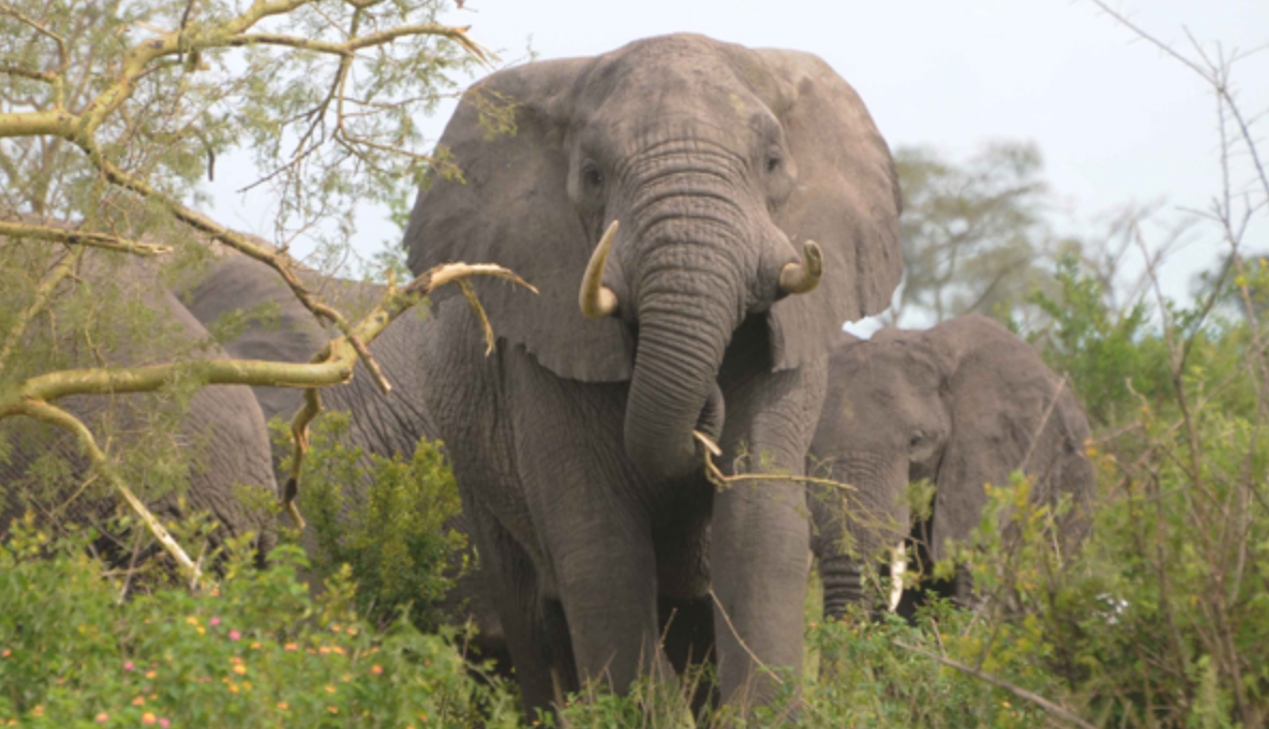
Best Places to See Elephants in Uganda
Best Places to See Elephants in Uganda: Among the African countries endowed with abundant biodiversity is Uganda, which is home to a wide variety of wildlife species, including huge game creatures like lions, buffalo, and elephants. A wide variety of ecosystems and living organisms may be found in the country’s rich ecology, which includes savannahs, wetlands, rolling landscapes, acacia trees, marshes, and water bodies, including lakes, rivers, and water channels. Globally, there are two types of elephants, the Asian elephant and the African elephant. These slightly differ in terms of size, body parts, and their natural habitats.
How African elephants differ from Asian elephants
Asian elephants and African elephants are the two species of elephants found worldwide. African elephants, as the name suggests, are larger and have larger ears that are shaped like an African map, but Asian elephants are smaller and have smaller ears. The two subspecies of African elephants, African forest elephants and African savanna elephants, are equally distributed throughout Uganda.
In contrast to the African elephant, which is larger, has pale skin, and has tusks that are longer and wider, these African forest elephants are smaller, darker-skinned, and have shorter, streamlined, straight tusks. This helps them with their daily tasks, which include digging potholes for water, protecting themselves, fighting, playing with others, and sourcing food, particularly when pushing heavy stems and tree trunks.
Best places to see elephants in Uganda
Elephants are primarily found in savanna parks in Uganda, such as Queen Elizabeth National Park, which is the second-biggest park in the country and has the greatest population of elephants in Uganda, numbering over 2,500. Kidepo Valley National Park and Murchison Falls National Park are other parks. Queen Elizabeth National Park has two species of elephants, including African forest elephants and African savanna elephants.
Matriarchal female
The matriarchal older female elephant leader is in charge of all the other elephants in the herd. She controls the group, including the men, and makes the decisions. She will always choose the best breed to mate with the females in the group, even during the mating season. At a certain age of adulthood, the matriarch will invariably expel the adult males from the group. Actually, only female elephants are permitted in groups; males are not.
Feeding / Diet
Unlike carnivorous animals that feed on flesh, these majestic creatures feed on grass, plants, leaves, fruits, and tree bark, among others. They frequently tend to throw out large branches to reach the leaves that appear far away. These leaves are always fresh and nutritious. Elephants can consume the fallen tree’s leaves and roots. This helps to keep other grasses alive, as part of enhancing the ecosystem.
Communication
In addition to their sense of sight, their eyes comprehend and their brain record what they see, stores it, and eventually memorizes it for years. They listen with their feet and always speak in silence. They have grace in every move they make and strength in every position. Their ears pick up wind whispers, listen far more than they talk, and they feel far more than they display.
Following the best places to see elephants in Uganda, it is hard for humans to hear their secret conversations due to infrasonic rumbles, which are too low-pitched for humans to hear, when communicating. These rumbles, like subterranean phone calls, travel for a few miles underneath.
Actually, they can communicate with other members who live far away. I discovered water, I am here, let’s move, danger is approaching, and many other things are indicated by varied rumbles. Elephant mothers call their young with distinct rumbles, and the young instantly identify their mother’s voice. What is amazing, do you know? Through their feet and trunks, other elephants are able to sense these vibrations. They are engaging in intricate discussions regarding family news, food, water, and treats.
Do elephants charge?
Due to their size and power, elephants can charge for a variety of reasons, and when they do, the consequences can be severe. Here are a few typical explanations for elephant charges:
Loss of habitat: People and elephants may clash as a result of elephants moving into human areas in search of food when their natural habitats are destroyed or reduced.
When threatened, Elephants can respond violently to protect themselves from the adversary if they feel threatened or in danger, particularly if they are carrying a calf. Be mindful of the ears at all times! Of course, if they are typically at the rear! Although it doesn’t see you as a threat, be prepared for problems the instant it flaps its ears in front of you.
Pain or Injury: An elephant may become irate out of discomfort or fear if it is hurt or may be hurt. Due to their extraordinary power, these elephants can attack or destroy anything in their path when they are upset, thus people must exercise caution and respect.
Enduring mistreatment: After experiencing severe treatment, cruel treatment, or hunting, elephants may harbour resentment and even turn antagonistic towards people.
Conclusion
Uganda stands out as one of those African countries that are gifted with the raw power of nature, with unique wildlife species such as elephants and other big game mammals. These species play a vital role in controlling the ecosystem, where different living organisms interact with the ecosystem as part of the conservation measures.
